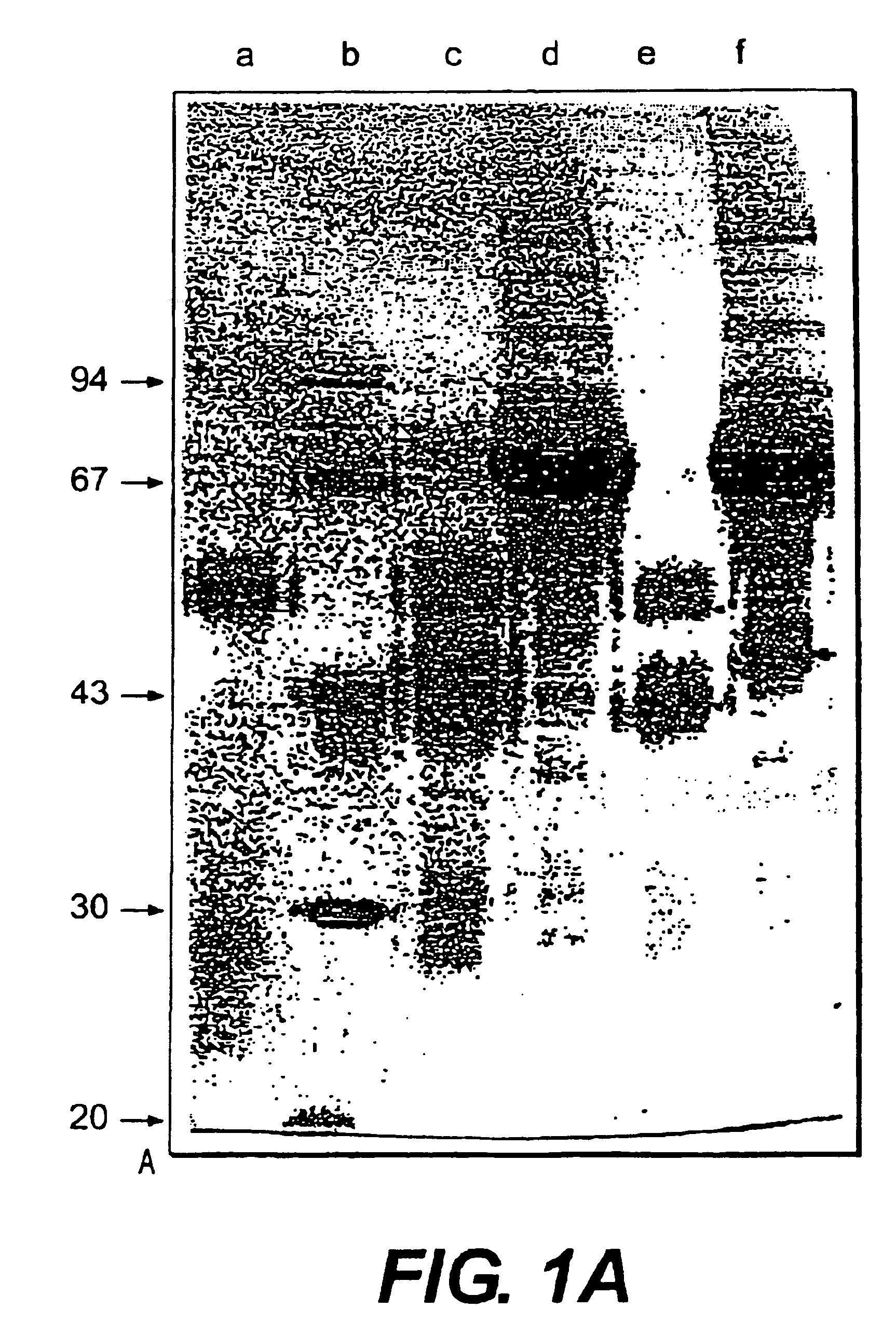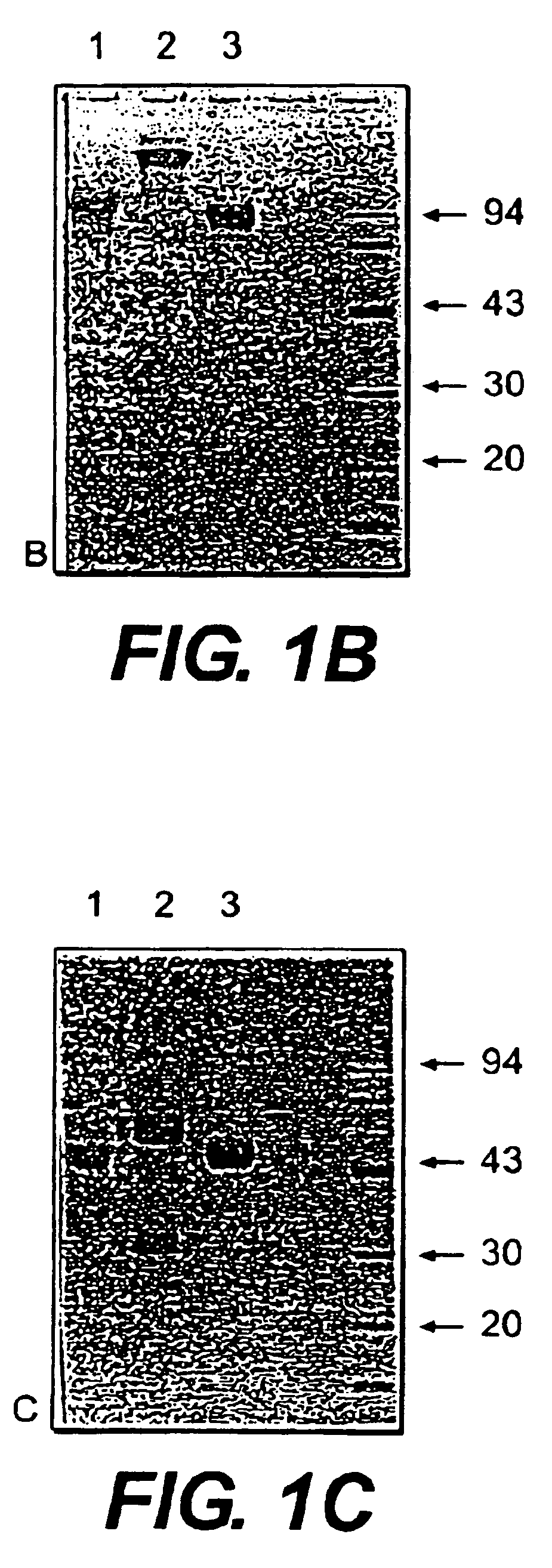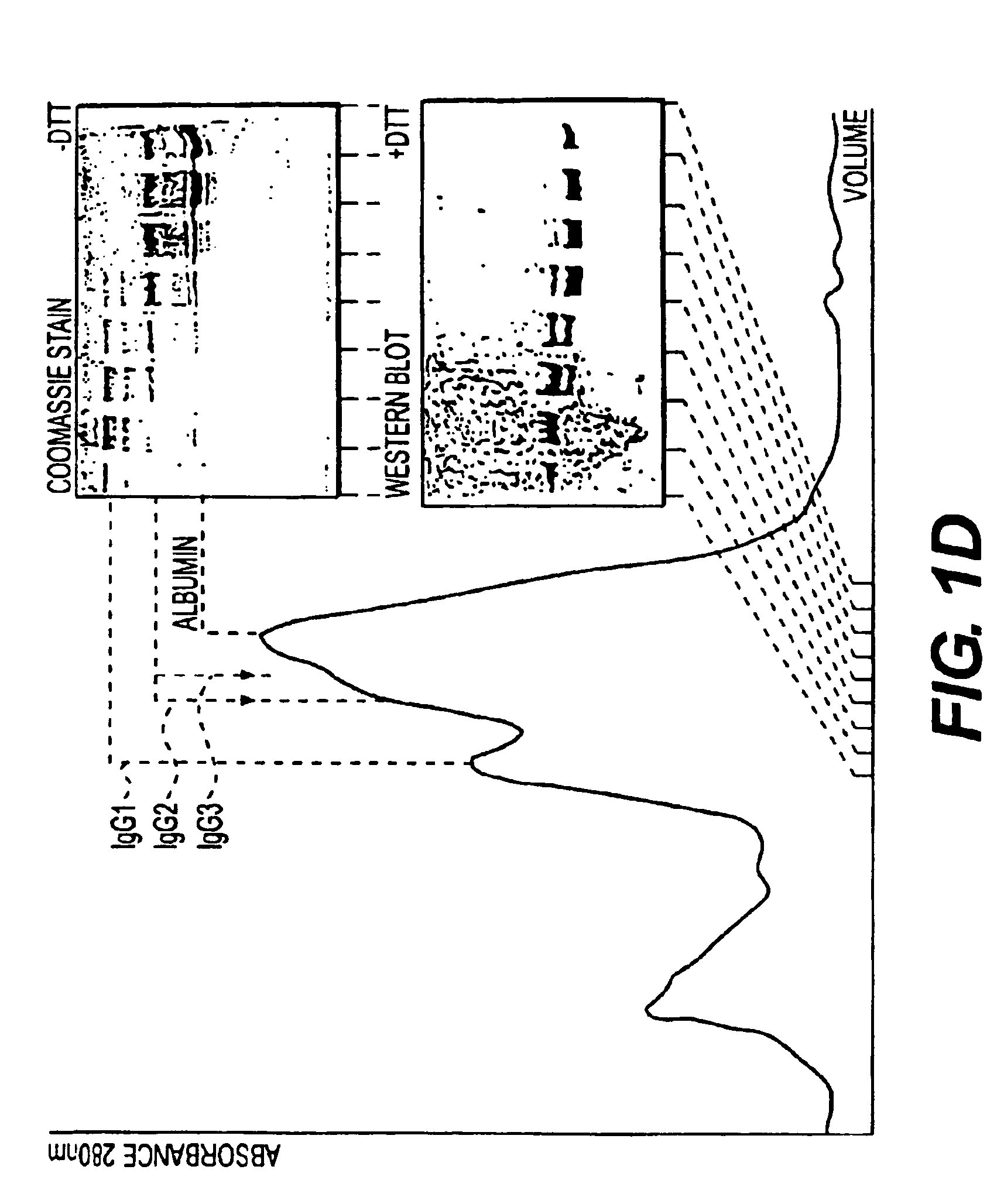Prosuction of antibodies or (functionalized) fragments thereof derived from heavy chain immunoglobulins of camelidae
a technology of camelidae and antibody, applied in the direction of antibody mimetics/scaffolds, polypeptides with localisation/targeting motif, biochemistry apparatus and processes, etc., can solve the problems of increasing the cost of antibody fragments, enzymatic processing increasing the cost of these fragments even more, and preventing the application of these fragments in processes and products. , the effect of improving the physical stability
- Summary
- Abstract
- Description
- Claims
- Application Information
AI Technical Summary
Benefits of technology
Problems solved by technology
Method used
Image
Examples
example 1
Construction of Cassettes Encoding VH Fragments Originating from Camelidae
[0112]For the production of VH fragments originating from Camelidae, the antibody gene fragments were isolated and cloned as described above in the draft publication. The thus obtained gene fragments encode the VH region, a short or a long hinge region and about 14 amino acids of the CH2 region. By using standard molecular biological techniques (e.g. PCR technology), the VH gene fragments could be subcloned and equipped at their 5′-ends with a gene fragment encoding the pelB signal sequence and at their 3′-ends with a gene fragment encoding the Flag tail (13 amino acids). Three of these clones were named pB3, pB9 and pB24 and were deposited at the Centraal Bureau voor Schimmelcultures, Baarn on 20 Apr. 1993 with deposition numbers: CBS 270.93, CBS 271.93 and CBS 272.93, respectively. The DNA and amino acid sequences of the Camelidae-VH fragments followed by the Flag sequence are presented in FIG. 5(A-C); see S...
example 2
Construction of S. cerevisiae Episomal Expression Plasmids for Camelidae VH
[0128]For the secretion of recombinant protein from S. cerevisiae it is worthwhile to test in parallel the two most frequently applied homologous signal sequences, the SUC2 invertase signal sequence and the prepro-α mating factor sequence.
[0129]The episomal plasmid pSY1 and pSY16 (Harmsen et al., 1993) contain expression cassettes for the α-galactosidase gene. Both plasmids contain the GAL7 promoter and PGK terminator sequences. pSY1 contains the invertase (SUC2) signal sequence and pSY16 contains a slightly modified (Harmsen et al., 1993) prepro-α-mating factor signal sequence.
[0130]Both plasmids, pSY1 and pSY16 can be digested with EagI and HindIII, the about 6500 bp long vector backbone of both plasmids can be isolated and subsequently ligated with the EagI / HindIII fragments from pUR4421-03F (−465 bp), pUR4421-03M (−455 bp) or pUR4421-03 (−405 bp) (See above).
[0131]This results in a series of 6 different ...
example 3
Construction of S. cerevisiae Multicopy Integration Vectors for the Expression of Camelidae VH
[0136]To combine the benefits of high copy number and mitotically stable expression, the concept of a multicopy integration system into the rDNA locus of lower eukaryotes has already been successfully proven (Giuseppin et al supra).
[0137]One of these vectors is pUR2778, a derivative of pUR2774 (Giuseppin et at supra) from which the pol1-S.O. reporter gene sequence was removed (FIG. 9). This integrating plasmid, pUR2778, can be used for integration of Camelidae VH coding sequences, hence the vector can be digested with SacI and HindIII after which the −73 kb vector fragment can be isolated.
[0138]From the in example 2 described pUR4423 or pUR4426 types of plasmids, SacI-HindIII fragments can be isolated encoding a VH fragment preceded by a signal sequence (SUC2 or a mating factor prepro) and followed by nothing or a Myc or Flag tail.
[0139]Ligation of these SacI-HindIII fragments with the 73 ...
PUM
| Property | Measurement | Unit |
|---|---|---|
| pH | aaaaa | aaaaa |
| pH | aaaaa | aaaaa |
| pH | aaaaa | aaaaa |
Abstract
Description
Claims
Application Information
 Login to View More
Login to View More - R&D
- Intellectual Property
- Life Sciences
- Materials
- Tech Scout
- Unparalleled Data Quality
- Higher Quality Content
- 60% Fewer Hallucinations
Browse by: Latest US Patents, China's latest patents, Technical Efficacy Thesaurus, Application Domain, Technology Topic, Popular Technical Reports.
© 2025 PatSnap. All rights reserved.Legal|Privacy policy|Modern Slavery Act Transparency Statement|Sitemap|About US| Contact US: help@patsnap.com



